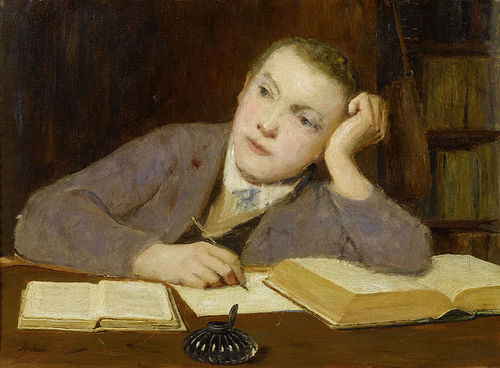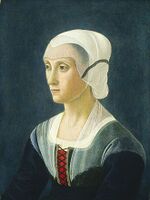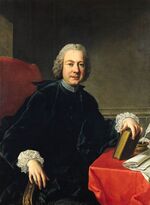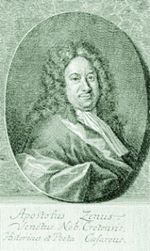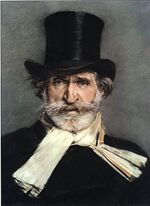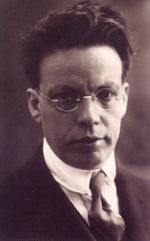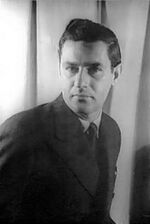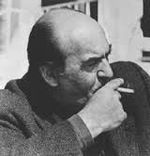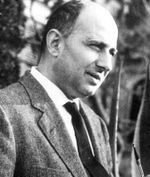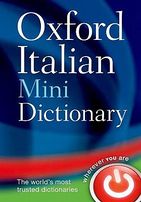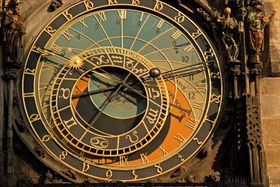Difference between revisions of "Category:Fiction--Italian"
Jump to navigation
Jump to search
(previous page) (next page)
| (15 intermediate revisions by the same user not shown) | |||
| Line 5: | Line 5: | ||
{{WindowMain | {{WindowMain | ||
|title= | |title= [[Fiction]] ([[Italian language]]) | ||
|backgroundLogo= Bluebg_rounded_croped.png | |backgroundLogo= Bluebg_rounded_croped.png | ||
|logo= history.png | |logo= history.png | ||
|px= 38 | |px= 38 | ||
|content= [[File:Thinking.jpg| | |content= [[File:Thinking.jpg|500px]] | ||
The page: '''Fiction--Italian''', includes works of [[Cinema]], [[Literature]], and [[Music]] made in [[Italian language]], from the XV century to the present. | The page: '''Fiction--Italian''', includes works of [[Cinema]], [[Literature]], and [[Music]] made in [[Italian language]], from the XV century to the present. | ||
}} | }} | ||
[[File:Lucrezia Tornabuoni.jpg|thumb|150px|[[Lucrezia Tornabuoni]]]] | |||
[[File:Pietro Metastasio.jpg|thumb|150px|[[Pietro Metastasio]]]] | [[File:Pietro Metastasio.jpg|thumb|150px|[[Pietro Metastasio]]]] | ||
[[File:Apostolo Zeno.jpg|thumb|150px|[[Apostolo Zeno]]]] | |||
[[File:Apostolo Zeno.jpg|thumb | |||
[[File:Giuseppe Verdi.jpg|thumb|150px|[[Giuseppe Verdi]]]] | [[File:Giuseppe Verdi.jpg|thumb|150px|[[Giuseppe Verdi]]]] | ||
[[File:Giovanni Papini.jpg|thumb|150px|[[Giovanni Papini]]]] | [[File:Giovanni Papini.jpg|thumb|150px|[[Giovanni Papini]]]] | ||
[[File:Giovanni Bovio.jpg|thumb|150px|[[Giovanni Bovio]]]] | |||
[[File:Gian Carlo Menotti.jpg|thumb|150px|[[Gian Carlo Menotti]]]] | |||
[[File:Pier Paolo Pasolini.jpg|thumb|150px|[[Pier Paolo Pasolini]]]] | [[File:Pier Paolo Pasolini.jpg|thumb|150px|[[Pier Paolo Pasolini]]]] | ||
[[File:Mario Brelich.jpg|thumb|150px|[[Mario Brelich]]]] | |||
[[File:Mario Pomilio.jpg|thumb|150px|[[Mario Pomilio]]]] | |||
[[File:Franco Zeffirelli.jpg|thumb|150px|[[Franco Zeffirelli]]]] | |||
[[File:Raffaele Mertes.jpg|thumb|150px|[[Raffaele Mertes]]]] | |||
{{WindowMain | {{WindowMain | ||
|title= Fiction ([[Italian language|Italian]]) -- Highlights | |title= Fiction ([[Italian language|Italian]]) -- Highlights | ||
| Line 43: | Line 33: | ||
|px= 38 | |px= 38 | ||
|content= | |content= | ||
* [[La passione di Gesù Cristo (1730 Metastasio), libretto]] | * [[La passione di Gesù Cristo (1730 Metastasio), libretto]] | ||
* [[La Gerusalemme convertita (1733 Zeno), libretto]] | * [[La Gerusalemme convertita (1733 Zeno), libretto]] | ||
| Line 56: | Line 47: | ||
* [[Gesù di Nazareth / Jesus of Nazareth (1977 Zeffirelli), film]] | * [[Gesù di Nazareth / Jesus of Nazareth (1977 Zeffirelli), film]] | ||
}} | }} | ||
{{WindowMain | |||
|title= Fiction ([[Italian language|Italian]]) -- History of research -- Overview | |||
|backgroundLogo= Bluebg_rounded_croped.png | |||
|logo= logo.png | |||
|px= 38 | |||
|content= | |||
In the 15th century Italian poets and playwrights inaugurated the traditions of literary works of entertainment dealings with "biblical" subject. | |||
In the 17th and 18th centuries, Itlian was the international language of music and hundreds of Italian oratorios were composed and performed all around Europe, [[Pietro Metastasio]] and [[Apostolo Zeno]] were the authors of some of the most popular librettos. | |||
In the first half of the 19th century, in the climate of Italian Risorgimento, Italian scholarship produced a series of remarkable works. Some of them captivated the Italian imagination, gaining large popular success. The operas ''Ciro in Babilonia'' (1812) by Gioachino Rossini, and ''Nabucco'' (1842) by Giuseppe Verdi as well as the drama ''Ester d'Engaddi'' (1821) by Silvio Pellico, all focused on the Second Temple period. For some time italian patriots identified themselves with the Jews of that time, who like them were longing for freedom under the oppression of foreign nations (the Babylonians and then the Romans). To avoid censure without loosing the political implications of the story, in 1844 Giovanni Pacini gave a Second Temple Jewish setting ("in the times of Vespasian") to Eugène Scribe's drama La Juive, which Jacques Fromental Halévy had already set to music in 1835 in France in its original Inquisition setting. Pacini had already composed in 1825 another highly successful opera with a first-century setting, L’ultimo giorno di Pompei <The Last Day of Pompeii>, a work that did not make any reference to Judaism or Christianity, but would inspire Edward Bulwer Lytton's famous 1834 novel. In 1848 Giovanni Pacini also set to music Pellico's drama Ester d'Engaddi. | |||
In 1887 | |||
In the 1890s Lorenzo Perosi revived the great traditions of Italian oratorios with a series of highly successful works centered on the life of Jesus. | |||
Italian silent movies, ''Quo Vadis'' (1912) by Guazzoni and ''Christus'' by Antamoro, were lavish productions that caused international sensation and inspired a long series of biblical movies. | |||
In the 1920s [[Giovanni Papini]] achieved international success with his ''Life of Jesu'', which was translated in numerous languages. | |||
After the war, Italian cinema experienced an extraordinary season of renewal. In "The Gospel according to Matthew'' (1964) [[Pier Paolo Pasolini]] drew on the lesson of Italian neo-realism to offer a sensitive and "true" portrait of a very human Jesus as the champion of the poor and the oppressed. | |||
In the 1970s, two Italian novels attracted some international attention, "The Fifth Gospel'' by Pomilio, and the ''Work of Betrayal'' by Brelich. | |||
}} | |||
{{WindowMain | |||
|title= [[Fiction]] -- [[Translated from Italian]] | |||
|backgroundLogo= Bluebg_rounded_croped.png | |||
|logo= contents.png | |||
|px= 38 | |||
|content= | |||
*[[Christ at the Feast of Purim = Cristo alla festa di Purim (1894 @1887 Bovio / Scott-Uda), play (English ed.)]] | |||
*[[Cristo en la fiesta de Purim = Cristo alla festa di Purim (Christ at the Feast of Purim / 1902 @1887 Bovio / Azzati), play (Spanish ed.)]] | |||
*[[Kristuksen historia = Storia di Cristo (Life of Christ / 1924 @1921 Papini / Hedman), non-fiction (Finnish ed.)]] | |||
*[[Krisztus története = Storia di Cristo (Life of Christ / 1925 @1921 Papini / Fülep), non-fiction (Hungarian ed.)]] | |||
*[[حياة المسيح = Storia di Cristo (Life of Christ / 1929 @1921 Papini), non-fiction (Arabic ed.)]] | |||
*[[The Salt of the Earth = Il sale della terra (1967 Monterosso / Quigly), novel (English ed.)]] | |||
*[[Das fünfte Evangelium = Il quinto evangelio (The Fifth Gospel / 1977 @1975 Pomilio / Windisch-Graetz), novel (German ed.)]] | |||
*[[L'oeuvre de trahison = L'opera del tradimento (The Work of Betrayal / 1979 @1975 Brelich / Piasecki), novel (French ed.)]] | |||
*[[El quinto evangelio = Il quinto evangelio (The Fifth Gospel / 1979 @1975 Pomilio / Pentimalli), novel (Spanish ed.)]] | |||
*[[Piata Ewangelia = Il quinto evangelio (The Fifth Gospel / 1979 @1975 Pomilio / Minkiewicz), novel (Polish ed.)]] | |||
*[[The Work of Betrayal = L'opera del tradimento (1988 @1975 Brelich / Rosenthal), novel (English ed.)]] | |||
*[[Navigator of the Flood = Il navigatore del diluvio (1991 @1979 Brelich / Shepley), novel (English ed.)]] | |||
*[[The Holy Embrace = Il sacro amplesso (1994 @1972 Brelich / Shepley), novel (English ed.)]] | |||
*[[Noyau d'òlive = Nocciolo d'oliva (2004 De Luca / Valin), novel (French ed.)]] | |||
*[[L'ombre du père (2006 Pazzi), novel (French ed.)]] | |||
}} | |||
{{WindowMain | |||
|title= [[Fiction]] -- [[Italian Authorship]] | |||
|backgroundLogo= Bluebg_rounded_croped.png | |||
|logo= contents.png | |||
|px= 38 | |||
|content= | |||
*[[Les mémoires de Judas (1867 Petruccelli della Gattina), novel]] | |||
*[[Amahl and the Night Visitors (1951 Menotti), opera]] | |||
}} | |||
{{WindowMain | {{WindowMain | ||
| Line 99: | Line 116: | ||
[[File:Cinema.jpg|100px]] [[File:Literature.png|80px]] [[File:Music.jpg|100px]] [[File:Art2.jpg|80px]] | [[File:Cinema.jpg|100px]] [[File:Literature.png|80px]] [[File:Music.jpg|100px]] [[File:Art2.jpg|80px]] | ||
}} | }} | ||
{{WindowMain | |||
|title= [[Italian]] : [[Italian Scholars|Scholars]], [[Italian Authors|Authors]] & [[Italian Artists|Artists]] | |||
|backgroundLogo= Bluebg_rounded_croped.png | |||
|logo= Italian flag.png | |||
|px= 38 | |||
|content= | |||
}} | |||
|} | |} | ||
|<!-- SPAZI TRA LE COLONNE --> style="border:5px solid transparent;" | | |<!-- SPAZI TRA LE COLONNE --> style="border:5px solid transparent;" | | ||
Latest revision as of 18:08, 10 November 2019
Pages in category "Fiction--Italian"
The following 200 pages are in this category, out of 660 total.
(previous page) (next page)1
- ~~ Fiction 1400s ~~
- == == 1450s == == ==
- La rappresentatione della Annunziazione di Nostra Donna (1471 Belcari), play
- Vita della gloriosissima Vergine Maria (Life of the Most Glorious Virgin Mary / 1471 Cornazzano), poetry (Italian)
- Vita di Cristo (Life of Christ / 1472 Cornazzano), poetry (Italian)
- Storie sacre (Sacred Narratives / 1475c Tornabuoni), poetry
- La rappresentatione di san Giovanni & Paulo (1491 Medici), play
- == == 1500s == == ==
- Orlando furioso (The Frenzy of Orlando / 1516 Ariosto), Italian poem
- Commedia della Conversione di Santa Maria Maddalena (1521 Alamanni), play
- Commedia della vita e della morte di S. Giovanni Battista (1525 Ottonaio), play
- L'umanità di Cristo (The Humanity of Christ / 1535 Aretino), novel
- La Mariana (1560 Dolce), play
- La gloriosa e trionfante vittoria donata dal grande Iddio al popolo hebreo per mezzo di Giuditta sua fidelissima serva (1564 Sacchetti), play
- Oloferne (1594 Alberti), play
- == == 1600s == == ==
- Giudetta (1602 Lottini), play
- La vita di S. Longino martire cavalier mantoano (1605 Magagnati), poetry
- La Reina Ester (1615 Cebà), poetry
- La Maddalena (Magdalene / 1617 Andreini), play
- La Maddalena (Magdalene / 1617 Monteverdi, Rossi, Effrem, Ghivizzani), theatre music
- Dialogo del Figliuol Prodigo (The Prodigal Son / 1619 Anerio), sacred dialogue
- Dialogo della conversione di San Paolo (Conversion of St. Paul / 1619 Anerio), sacred dialogue
- Dialogo di David (David and Goliath / 1619 Anerio), sacred dialogue
- Ester (1619 Modena), play
- Santa Maria Maddalena (1621 Cicognini), play
- La Giudea distrutta da Vespasiano e Tito (1627 Finella), play
- Esther (1628 Della Valle), play
- Iudit (1628 Della Valle), play
- La strage degl'innocenti (The Slaughter of the Innocents / 1632 Marino), poetry (Italian)
- Maria Maddalena peccatrice e convertita (1636 Brignole-Sale), novel
- L’ebrea famelica (The Famishing Jewess / 1640 Caputi / Vittori), oratorio (music & libretto)
- L'incoronazione di Poppea (The Coronation of Poppaea / 1642 Monteverdi / Busenello), opera (music & libretto), Venice premiere (cast)
- L'orto di Getsemani glorioso nei sudori di Cristo (1661 Arresti), oratorio
- Licenza di Giesù da Maria (1661 Arresti), oratorio
- S. Pietro piangente (St. Peter Weeping / 1664 Ziani / Guadagni), oratorio (music & libretto), Vienna premiere
- La strage degli innocenti (1665 Bertali), oratorio
- Il Nerone (Nero / 1666 Biancolelli), play
- Il Tito (Titus / 1666 Cesti / Beregani), opera (music & libretto), Venice premiere
- Le lachrime di S. Pietro (The Tears of St. Peter / 1666 Sances / Sbarra), oratorio
- La Pellegrina ingrandita; ovvero, La Regina Ester (1666 Torre), play
- Giona profeta (The Prophet Jonah / 1667 Pedrazzoli / Draghi), oratorio
- Il Tito (1668 Binitti), opera
- La Giuditta (Judith / 1668 Cazzati), oratorio
- La Giuditta (Judith / 1668 Draghi), oratorio
- S. Andrea Apostolo (1672 Benevoli / Benigni), oratorio
- Claudio Cesare (Claudius Caesar / 1672 Boretti / Aureli), opera (music & libretto), Venice premiere
- Li Maccabei (The Maccabees / 1674 Bicilli / Mazzei), oratorio
- Lo sposalizio di Rebecca (1675 Arresti), oratorio
- Il Nerone (Nero / 1675 Boccaccio), play
- San Giovanni Battista (St. John the Baptist / 1675 Stradella / Ansaldi), oratorio
- Gli sponsali d'Ester (The Nuptials of Esther / 1676 Legrenzi / Orsi), oratorio
- La passione di Giesù Christo (1677 Cherici), oratorio
- Il Sansone (1677 Colonna / Balbi), oratorio
- Il Nerone (Nero / 1677 Liberati / Ficieno), oratorio (music & libretto)
- Ester liberatrice del popolo ebreo (Esther Liberating the Jewish People / 1677 Stradella / Orsini), oratorio
- Il sacrificio di Abele (The Sacrifice of Abel / 1678 Melani / Pamphili), oratorio
- Il Vespasiano (Vespasian / 1678 Pallavicino / Corradi), opera (music & libretto), Venice premiere
- Il Nerone (Nero / 1679 Pallavicino / Corradi), opera (music & libretto), Venice premiere
- Passio secundum Ioannem (St. John Passion / 1679 Scarlatti), oratorio
- Agar et Ismaele esiliati (1683 Scarlatti / Totis), oratorio
- La madre de' Maccabei (The Mother of the Maccabean Martyrs / 1685 Mercuriali / Gigli), oratorio
- Il Mosè legato di Dio e liberatore del popolo ebreo (Moses, Legate of God and Liberator of the Hebrew People / 1686 Colonna / Giardini), oratorio (music & libretto), Modena premiere
- La Giuditta (Judith / 1686 Ziani), oratorio
- Agrippina in Baia (1687 Bassani / Contri), opera (music & libretto), Ferrara premiere
- L'Erodiade; ovvero, La morte di S. Giovanni Battista (Herodias; or, The Death of St. John the Baptist / 1687 Legrenzi / Neri), oratorio
- La madre de' Maccabei (The Mother of the Maccabean Martyrs / 1688 Fabbrini / 1685 Gigli), oratorio
- La fornace di Nabuc di Nasor (1688 Pagano), oratorio
- Il Giona (Jonah / 1689 Bassani / Ambrosini), oratorio
- Il Giona (Jonah / 1689 Vitali / Bartoli), oratorio
- La Maddalena a' piedi di Cristo (Magdalene at the Feet of Christ / 1690 Bononcini / Forni), oratorio (music & libretto), Modena premiere
- Bettuglia liberata (1690 Colonna / Bergamori), oratorio
- Il convito di Baldassarro (Belshazzar's Feast / 1691 Albergati / Cintoli), oratorio
- Gerusalemme destrutta da Tito (1691 Cattani / Fineschi), oratorio
- L'ingresso alla gioventù di Claudio Nerone (The Coming of Age of Nero / 1692 Giannettini / Neri), opera (music & libretto), Modena premiere
- Nerone fatto Cesare (Nero Made Emperor / 1692 Perti / Noris), opera (music & libretto), Venice premiere
- Le nozze di Tobia (1692 Viviani / Fineschi), oratorio
- La passione di Cristo (The Passion of Christ / 1693 Ariosti / Arnoaldi), oratorio (music & libretto), Modena premiere
- La Giuditta, "Rome version" (1693 Scarlatti / Ottoboni), oratorio
- Il viaggio di Tobia (1695 Casini), oratorio
- L'Esterre (Esther / 1695 Muratori-Scannabecchi / Bergamori), oratorio
- Nerone fatto Cesare (Nero Made Emperor / 1695 Scarlatti / @1692 Noris), opera (music), Naples premiere
- La nascita di Samuele (1696 Casini), oratorio
- I fanciulli babilonesi (The Babylonian Children / 1696 Orlandini), oratorio
- La Mariamne (Mariamne / 1696 Ruggieri / Burlini), opera (music & libretto), Venice premiere
- Il figliuol prodigo (The Prodigal Son / 1697 Biffi / Ciallis), oratorio
- La fuga in Egitto (1697 Casini), oratorio
- Juda Machabeus (1697 Pulci), oratorio
- La Giuditta, "Cambridge version" (1697 Scarlatti / Ottoboni), oratorio
- Il ritorno di Tobia (1698 Badia / Del Negro), oratorio
- La Maddalena a' piedi di Cristo (Magdalene at the Feet of Christ / 1698 Caldara / Sandrinelli, @1690 Forni), oratorio (music & libretto), Venice premiere
- Giacobbe in Mesopotamia (1698 Casini), oratorio
- La fortezza al cimento (Nero / 1699 Aldrovandini / Silvani), opera (music & libretto), Venice premiere
- La decollazione di S. Giovanni Battista (1699 Ingegneri), oratorio
- == == 1700s == == ==
- Sansone accecato dai Filistei (1700 Urio), oratorio
- La Giuditta (1701 Lotti), oratorio
- La madre de' Maccabei (The Mother of the Maccabean Martyrs / 1704 Ariosti / 1685 Gigli), oratorio
- La sepoltura di Cristo (1704 Predieri / Mazzoni), oratorio
- La madre de' Maccabei (The Mother of the Maccabean Martyrs / 1705 Aldrovandini / 1685 Gigli), oratorio
- La Giuditta (Judith / 1706 Buonaccorsi), oratorio
- La caduta di Simon Mago (The Fall of Simon Magus / 1706 Ciccioni / Grappelli), oratorio (music & libretto), Rome premiere
- La regina Ester (1706 Saratelli), oratorio
- Transito di S. Giuseppe (1707 Santini / Ginori), oratorio
- La decollazione del S. Precursore Giovanni Battista (1708 Arresti / Grappelli), oratorio
- La resurrezione (The Resurrection / 1708 Haendel / Capece), oratorio (music & libretto), Rome premiere (cast)
- Il martirio de' Maccabei (1709 Badia / Stampiglia), oratorio
- La decollazione di San Giovanni Battista (1709 Bononcini), oratorio
- Agrippina (1709 Haendel / Grimani), opera (music & libretto), Venice premiere (cast)
- Daniele (Daniel / 1709 Rotondi / Grappelli), oratorio
- La Giuditta (1710 Badia / Stampiglia), oratorio
- Il trionfo della fede nella conversione di S. Paolo (The Triumph of Faith in the Conversion of St. Paul / 1710 Novi), oratorio
- L'umiltà coronata in Esther (1712 Lotti / Pariati), oratorio
- Il figliuol prodigo (The Prodigal Son / 1712 Orlandini / Pamphili), oratorio
- Santa Flavia Domitilla (1713 Caldara), oratorio
- Maria e Giuseppe in traccia di Gesù (1713 Predieri / Mescoli), oratorio
- Tito e Berenice (Titus and Berenice / 1714 Caldara / Capece), opera (music & libretto), Rome premiere (cast)
- La donna forte nella madre dei sette Maccabei (1714 Fux / Pariati), oratorio
- La fede sacrilega nella morte del Precursore S. Giovanni Battista (Sacrilegious Faith in the Death of the Precursor, St. John the Baptist / 1714 Fux / Pariati), oratorio
- La decollazione di San Giovanni Battista (1715 Grimani), oratorio
- Nerone fatto Cesare (Nero Made Emperor / 1715 Vivaldi / @1692 Noris), opera (music), Venice premiere
- La Giuditta (1717 Arresti), oratorio
- Cristo nell’orto (Christ in the Garden / 1718 Fux / Pariati), oratorio
- La regina Ester (1719 Berti / Aceti), oratorio
- Gesù Cristo negato da Pietro (1719 Fux / Pariati), oratorio
- La madre de’ Maccabei (1719 Massarotti), oratorio
- Tobia (1720 Porsile / Zeno), oratorio
- L'incoronazione di Ester (1720 Ristori / Ginori), oratorio
- Nerone (Nero / 1721 Orlandini / Piovene), opera (music & libretto), Venice premiere
- I pastori al presepe (1721 Pistocchi / Pallavicini), oratorio
- La decollazione di San Giovanni Battista (1721 Predieri), oratorio
- Gli eccessi della gelosia (1722 Albinoni), opera
- Il re del dolore (1722 Caldara / Pariati), oratorio
- Esther; ovvero, L'umiltà coronata (1722 Clari), oratorio
- L'Ester (1723 Bellinzani / Ercolani), oratorio
- Ester (1723 Caldara / Fozio), oratorio
- Il ritorno di Tobia (1723 Lotti / Melani), oratorio
- L'Ester (1723 Orlandini / Melani), oratorio
- Il trionfo di Giuditta (1723 Porsile / Maddali), oratorio
- La Mariane (1724 Albinoni/Porta), opera
- Vespasiano (Vespasian / 1724 Ariosti / Hayim, @1678 Corradi), opera (music & libretto), London premiere
- L'Agrippa tetrarca di Gerusalemme (1724 Buini), opera
- Morte e sepoltura di Cristo (1724 Caldara / Fozio), oratorio
- Ester (1724 Sarro), oratorio
- Nerone (Nero / 1724 Vignati / @1721 Piovene), opera (music), Milan premiere
- Berenice (1725 Orlandini / Pasqualigo), opera (music & libretto), Venice premiere (cast)
- Nerone detronato (Nero Dethroned / 1725 Pescetti / Cimbaloni), opera (music & libretto), Venice premiere
- La Giuditta (1726 Almeida), oratorio
- Spartaco (Spartacus / 1726 Porsile / Pasquini), opera (music & libretto)
- Il Batista (John the Baptist / 1727 Caldara / Zeno), oratorio (music & libretto), Vienna premiere (cast)
- Per la festività del santo natale (For the Feast of Christmas / 1727 Costanzi / Metastasio), oratorio
- Tobia il giovine (1727 Galuppi / Giupponi), oratorio
- Per la festività del santo natale (For the Feast of Christmas / 1727 Metastasio), libretto (oratorio)
- Matatia in Modin (1727 Redi), oratorio
- La circoncisione del santo bambino Gesù (1729 Chiocchetti), oratorio
- La passione di Gesù Cristo (The Passion of Jesus Christ / 1730 Caldara / @1730 Metastasio), oratorio (music), Vienna premiere
- La passione di Gesù Cristo (The Passion of Jesus Christ / 1730 Metastasio), libretto (oratorio)
- Daniello (Daniel / 1731 Caldara / @1731 Zeno), oratorio
- Il Titto / Titus l'empereur (Titus / 1731 Haendel), opera (music)
- Daniello (Daniel / 1731 Hasse / @1731 Zeno), oratorio
- Daniello (Daniel / 1731 Zeno), libretto
- L'osservanza della divina legge martirio de' Maccabei (1732 Conti / Lucchini), oratorio
- La morte d'Abel (The Death of Abel / 1732 Leo / @1732 Metastasio), oratorio
- La morte d'Abel (The Death of Abel / 1732 Metastasio), libretto (oratorio)
- La Gerusalemme convertita (1733 Caldara / Zeno), oratorio
- L'Ester (1733 Manzoni Giusti), play
- Il ritorno di Tobia (1733 Reutter / Pasquini), oratorio
- La passione di Gesù Cristo (The Passion of Jesus Christ / 1733 Sodi / @1730 Metastasio), oratorio (music), Montefiascone premiere
- La Gerusalemme convertita (1733 Zeno), libretto
- La clemenza di Tito (The Clemency of Titus / 1734 Caldara / @1734 Metastasio), opera (music), Vienna premiere
- San Pietro in Cesarea (1734 Caldara / Zeno), oratorio
- Il cantico de' tre fanciulli (1734 Hasse / Pallavicini), oratorio
- (++) La Betulia liberata (The Liberation of Bethulia / 1734 Metastasio), libretto
- La clemenza di Tito (The Clemency of Titus / 1734 Metastasio), libretto (opera)
- La Betulia liberata (The Liberation of Bethulia / 1734 Reutter / @1734 Metastasio), oratorio (music), Vienna premiere
- Gesù presentato nel Tempio (1735 Caldara / Zeno), oratorio
- Nerone = La fortezza al cimento (Nero / 1735 Duni / @1699 Silvani), opera (music), Rome premiere
- La passione di Gesù Cristo (The Passion of Jesus Christ / 1735 Gregori / @1730 Metastasio), oratorio (music), Lucca premiere
- Tito Vespasiano; ovvero, La clemenza di Tito (The Clemency of Titus / 1735 Hasse / @1734 Metastasio), opera (music), Pesaro premiere (cast)
- La clemenza di Tito (The Clemency of Titus / 1735 Leo / @1734 Metastasio), opera (music), Venice premiere (cast)
- Componimento sagro per il SS.mo Natale di N.S. Gesù Cristo (For the Feast of Christmas / 1735 Mazzoni / 1727 Metastasio), oratorio
- La passione di Gesù Cristo (The Passion of Jesus Christ / 1735 Venturelli / @1730 Metastasio), oratorio (music), Modena premiere
- La Giuditta (Judith / 1735 Wassmuth), oratorio
- Gesù al Calvario (1735 Zelenka / Boccardi), oratorio
- La clemenza di Tito (The Clemency of Titus / 1736 Ciocchetti / @1734 Metastasio), opera (music), Genoa premiere (cast)
- La clemenza di Tito (The Clemency of Titus / 1736 Peli / @1734 Metastasio), opera (music), Munich premiere
- Per la festività del santo natale (For the Feast of Christmas / 1737 Gregori / 1727 Metastasio), oratorio
- La Betulia liberata (The Liberation of Bethulia / 1737 Leoni / @1734 Metastasio), oratorio (music), Genoa premiere
- La clemenza di Tito (The Clemency of Titus / 1737 Marchi / @1734 Metastasio), opera (music), Milan premiere (cast)
- La madre de’ Maccabei (1737 Porsile / Manzoni), oratorio
- La passione di Gesù Cristo (The Passion of Jesus Christ / 1737 Sarro / @1730 Metastasio), oratorio (music), Rome premiere
- La clemenza di Tito / The Clemency of Titus (1737 Veracini / Cori, @1734 Metastasio), opera (music), London premiere (cast)
- La clemenza di Tito (The Clemency of Titus / 1738 Arena / @1734 Metastasio), opera (music), Turin premiere (cast)
- La Betulia liberata (The Liberation of Bethulia / 1738 Bernasconi / @1734 Metastasio), oratorio (music), Vienna premiere
- S. Pietro (St. Peter / 1738 Martini / Coluzzi), oratorio (music & libretto)
- La passione di Gesù Cristo (The Passion of Jesus Christ / 1739 Conti / @1730 Metastasio), oratorio (music), Naples premiere
- San Paolo in Atene (St. Paul in Athens / 1740 Bonno / Pasquini), oratorio
- Ester (1740 Pampani / Cordara), oratorio
Media in category "Fiction--Italian"
The following 35 files are in this category, out of 35 total.
- 1821 Pellico (play).png 420 × 595; 153 KB
- 1848 Pacini (opera).jpg 293 × 500; 36 KB
- 1913 Rodolfi & Caserini (film).jpg 200 × 273; 24 KB
- 1913 Guazzoni (film).jpg 330 × 475; 67 KB
- 1916 Antamoro (film).jpg 1,382 × 1,761; 278 KB
- 1919 Gallone (film).jpg 500 × 678; 127 KB
- 1921 * Papini (novel).jpg 333 × 499; 25 KB
- 1924 D'Annunzio & Jacoby (film).jpg 230 × 345; 46 KB
- 1948 Alessandrini (film).jpg 230 × 345; 46 KB
- 1952 Francisci (film).jpg 214 × 317; 23 KB
- 1954 Fabbri.jpg 425 × 600; 145 KB
- 1957 Brignone (film).jpg 282 × 426; 26 KB
- 1956 Steno (film).jpg 235 × 336; 42 KB
- 1958 Bragaglia (film).jpg 569 × 800; 370 KB
- 1959 Bonnard (film).jpg 330 × 469; 50 KB
- 1959 Tourjansky (film).jpg 299 × 472; 161 KB
- 1960 Baldi (film).jpg 214 × 317; 27 KB
- 1961 Fleischer (film).jpg 300 × 467; 73 KB
- 1962 Callegari (film).jpg 204 × 300; 35 KB
- 1964 Pasolini (film).jpg 231 × 325; 16 KB
- 1969 Rossellini (TV miniseries).jpg 194 × 259; 9 KB
- 1972 Bene (film).jpg 187 × 270; 17 KB
- 1974 De Bosio (film).jpg 300 × 429; 58 KB
- 1975 Rossellini (film).jpg 166 × 255; 53 KB
- 1976 Castellacci (film).jpg 288 × 488; 24 KB
- 1977 * Zeffirelli (TV miniseries).jpg 263 × 475; 43 KB
- 1981 Festa (film).jpg 300 × 400; 41 KB
- 1983 Olmi (film).jpg 200 × 285; 16 KB
- 1985 Rossi (miniseries).jpg 299 × 419; 140 KB
- 1986 Damiani (film).jpg 284 × 398; 33 KB
- 1987 Magni (film).jpg 176 × 250; 13 KB
- 1987 Rossi (TV miniseries).jpg 200 × 280; 19 KB
- 1988 Benvenuti (film).jpg 296 × 417; 94 KB
- 1998 D'Alatri (film).jpg 348 × 488; 25 KB
- 2010 Chiesa (film).jpg 472 × 669; 146 KB
